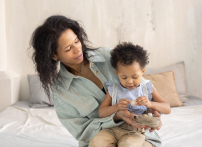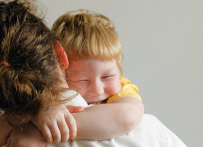Dropping your little one off at childcare for the first time? It’s a bittersweet moment. While it's exciting to watch them take their first steps towards independence, it’s normal to wonder, “Is my child safe at childcare?”
The short answer? Yes—Australia has some of the strictest childcare safety guidelines in the world. But here’s the thing, safety isn’t just about tick boxes and signed paperwork. It’s about gut checks, trust, and creating an environment where children feel secure, supported, and free to be themselves.
This guide is here to help you understand childcare safety and give you the tools to confidently assess if your child’s service is hitting the right marks.
What Makes Childcare Safe?
Childcare safety isn’t just about locking doors and washing hands (although, hey, those are important!). It’s about creating a holistic environment where children are physically, emotionally, and socially safe.
Australia’s childcare safety standards are guided by the National Quality Standard (NQS), and every early learning service must meet strict guidelines outlined by the Australian Children’s Education & Care Quality Authority (ACECQA).
Here are the key components of childcare safety that centres focus on every single day:
- Qualified Educators: Every staff member must pass Working With Children Checks (WWCC) and be trained in child protection, first aid, and emergency procedures.
- Safe Spaces: Clean, hazard-free play areas with proper supervision and clear sightlines to monitor activity.
- Child Protection Policies: Centres have formal policies in place for reporting, responding to, and preventing harm or abuse.
- Open Communication: Parents and children are encouraged to speak up about any concerns or feedback.
But beyond the rules, childcare safety is about a vibe (yes, really). Your child should feel safe, happy, and valued in their care environment.
How to Assess Childcare Safety
1. Observe the Environment
When you visit your childcare centre, trust your senses. Download our “5 Senses Childcare Safety” checklist to assess the space at a glance.
2. Build Relationships with Educators
The educators at your childcare centre are the people spending the most time with your child. They’re not just caregivers; they’re teachers, role models, and confidants.
- Chat with educators regularly—ask how your child’s day went and discuss any concerns.
- Notice how they talk to and about your child. Do they use their name and genuinely engage with their interests?
A strong relationship with educators makes it easier to address concerns openly and collaboratively.
3. Understand Child Safety Guidelines
All childcare centres are required to follow the NQS Quality Area 2, which focuses on children’s health and safety. Familiarising yourself with these standards will help you spot whether your child’s centre is staying compliant.
Here’s a brief overview of what centres are expected to do:
- Proactively minimise risks, from secure entry points to safe outdoor play equipment.
- Actively listen to children and involve families in fostering a respectful, inclusive environment.
- Follow mandatory reporting laws to ensure any suspicions of harm are promptly addressed.
Tip: Each Australian state has slight variations in childcare safety regulations, so take a moment to learn the specific requirements in yours.
How Parents Play a Role in Childcare Safety
Spoiler alert: Childcare safety isn’t just up to the educators and directors. Parents play an essential part too!
Here’s how you can get involved and feel confident about your child’s care.
1. Stay Engaged
- Read emails or attend information sessions provided by your childcare service to stay in the loop about their practices.
- Ask questions like, “How does the centre handle emergencies?” or “What training do staff receive on child protection?”
2. Watch Your Child for Cues
Your child’s behaviour can reveal so much about their comfort and safety at childcare.
- Notice if their mood or behaviour shifts after attending care.
- Engage them in open conversations about their day. For example, “What was your favourite thing you did today?” or “What do you like about your educators?”
3. Speak Up
You know that funny feeling in your gut when something doesn’t sit right? Don’t ignore it.
If you suspect that something’s off, raise your concerns with the centre’s leadership team, and don’t hesitate to report issues to child protection authorities if needed.
4. Get Hands-On
Join parent committees, volunteer for centre activities, or offer to help review safety policies. Being part of the process not only builds trust in the system but also strengthens the childcare community as a whole.
Practical Safety Features to Look For
Still feeling unsure? Here are some physical indicators of top-notch safety practices in childcare centres:
- Secure entry systems (e.g., PIN codes) to prevent unauthorised access.
- Daily room checks and maintenance to address hazards like broken toys or playground equipment.
- Nut-free zones or allergy management policies.
- Emergency evacuation plans that are visibly displayed and regularly rehearsed.
- A family-first approach, where parent feedback is welcomed and valued.
The Big Picture of Safe Childcare
Choosing a childcare centre can be nerve-wracking, but here’s the good news—Australia’s rigorous childcare safety guidelines ensure that services are well-equipped to protect your little ones.
By observing, asking questions, and staying involved, you can feel confident in your choice.
And remember, all of us—from parents and educators to centre management—play a role in keeping children safe. Communication and collaboration are key to ensuring childcare safety goes beyond compliance and becomes culture.
Got more questions about childcare safety? Reach out to your childcare provider or check out resources like ACECQA for detailed guidance.



































